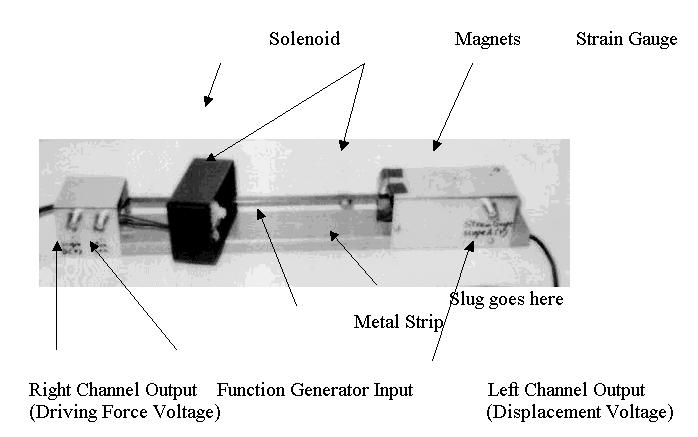
Introductory Laboratory Apparatus
Apparatus Title: Compact Forced Harmonic Oscillator
Abstract (40-50 words) Traditional apparatus for examining forced harmonic motion usually mimic the textbook example i.e., mass on a spring. In this apparatus, a thin metal strip fixed on both ends flexes while a strain gauge measures the displacement. There are outputs for gauge and driving signals and an input for function generator.
Sketch of the apparatus

A complete description of the apparatus is desirable, detailed enough that others can duplicate the apparatus. This description (anonymous) will be available to the judges of the apparatus. Samples of student reports (anonymous) may also help the judges to recognize the merits of this apparatus.
Description
A thin metal strip (strapping steel) approximately 27 cm long, 1 cm wide and 0.3 mm thick is clamped at both ends, with one end bent sharply before it is clamped. A strain gauge is attached 1.5 cm away from the non-bent end. Two small magnets are attached at approximately L/4 and 3L/4. One magnet functions as a means of damping when an aluminum slug is placed directly under it. The other magnet, in conjunction to a solenoid placed to one side of it, serves as the driving force on the strip when a sinusoid from a signal generator is applied to the solenoid. The driving force is proportional to the current through the solenoid, which is measured through a 10 ohm serially connected resistor. There are BNC outputs for strain gauge and the voltage drop across the solenoid resistor and a BNC input for a function generator. All components are mounted on a plastic beam 37 cm long by 5 cm wide. Foam strips are placed under the beam for center-of-mass vibration damping.